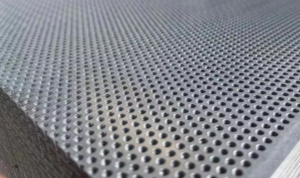In the realm of metalworking and material engineering, the terms “mesh” and “perforated sheet” are often used interchangeably, leading to some confusion among those not familiar with the nuances of these materials. However, there are distinct differences between mesh and perforated sheet that are crucial to understanding when selecting materials for specific applications. This article aims to clarify these differences, providing a comprehensive overview of the characteristics and uses of both mesh and perforated sheet.

What are the differences between mesh and perforated sheet?
Mesh
Mesh is a material composed of a network of interconnected strands or wires, typically arranged in a regular pattern to form a porous structure. The size and spacing of the openings, known as mesh size, can vary widely depending on the application and the material used to make the mesh. Mesh is commonly made from metals such as steel, stainless steel, brass, or aluminum, but it can also be constructed from synthetic fibers like nylon or polypropylene.
The primary characteristics of mesh are its open structure and high porosity. This allows for the passage of air, light, and fluids while still providing a degree of structural integrity. Mesh is often used in applications where it is necessary to filter, sift, or separate particles or fluids, such as in screens, strainers, and sieves. It is also commonly found in fencing, netting, and decorative applications due to its aesthetic appeal and ability to withstand tensile forces.
The manufacturing process for mesh typically involves weaving or welding the strands or wires together to form the desired pattern. This process allows for a wide range of mesh sizes and configurations, making mesh a versatile material for various applications. However, the open structure of mesh can also make it less suitable for applications that require a smooth surface or where the mesh strands could become snagged or obstructed.
Perforated Sheet
Perforated sheet, on the other hand, is a solid sheet of material that has been mechanically punched or stamped with a series of holes or perforations. These holes can be circular, square, rectangular, or other shapes, and their size, spacing, and pattern can be customized to meet specific requirements. Perforated sheet is commonly made from metals such as steel, stainless steel, aluminum, or copper, but it can also be produced from plastics or other materials.
The main advantage of perforated sheet is its solid base, which provides a sturdier and more rigid structure than mesh. This makes perforated sheet ideal for applications that require a certain degree of structural support or where a smooth, uninterrupted surface is desired. The holes in the sheet allow for the passage of air, light, and fluids while maintaining the overall integrity of the sheet.
Perforated sheet is often used in architectural applications such as cladding, screening, and facades, where its aesthetic appeal and structural strength are valued. It is also commonly found in industrial settings, where it is used as filters, screens, and guards to control the flow of fluids or particles. The manufacturing process for perforated sheet involves the use of punching machines or lasers to create the desired holes in the sheet material. This process allows for precise control over the hole size, shape, and spacing, enabling the production of perforated sheets with highly customized characteristics.
The Differences between Mesh and Perforated Sheet – Comparison and Applications
The key differences between mesh and perforated sheet lie in their structure and properties. Mesh is composed of interconnected strands or wires, resulting in an open and porous material that is excellent for filtering and separation tasks. Its flexibility and tensile strength make it suitable for applications where a degree of give is required or where the material needs to conform to a specific shape.
Perforated sheet, on the other hand, has a solid base with holes punched through it, providing a sturdier and more rigid structure. This makes it ideal for applications that require both porosity and structural integrity, such as in architectural cladding or industrial screens. The solid base of perforated sheet also gives it a smoother surface than mesh, making it more suitable for applications where a snag-free or obstruction-free surface is desired.
Conclusion
In summary, the choice between mesh and perforated sheet depends on the specific requirements of the application. Mesh is preferred for filtering, sifting, and separation tasks due to its open and porous structure, while perforated sheet is more suitable for applications that require a sturdy and rigid material with controlled porosity.
Thank you for reading our article and we hope it can help you to have a better understanding of the differences between mesh and perforated sheet. If you are looking for Stainless Steel Perforated Sheets suppliers and manufacturers online now, we would advise you to visit Sino Stainless Steel.
As a leading supplier of stainless steel products from Shanghai China, Sino Stainless Steel offers customers high-quality stainless steel strips, stainless steel coils, stainless steel decorative sheets, stainless steel tubes, stainless steel pipes, stainless steel plates, and stainless steel bars at a very competitive price.
 :+86-13012867759
:+86-13012867759  :export86@sino-stainless-steel.com
:export86@sino-stainless-steel.com
katana
katana
Your article helped me a lot, is there any more related content? Thanks!